“The flowers flutter out from amongst the sea-green leaves like blue-and-gold butterflies; each is borne singly on a pedicel, the plant carrying half a dozen nodding, incredibly blue flowers, with a wad of gold anthers in the centre.”—Frank Kingdon-Ward
In the remote valleys of the Himalayan Mountains there grows a family of plants, Meconopsis [from the Greek mekon (poppy) and opsis (like)], with over ninety species, including several astonishing blue varieties. Plant explorers from Europe collected seed in the late nineteenth century which was sent back to botanical gardens. But it wasn’t until 1924 that plantsman Frank Kingdon-Ward found the poppies, harvested the seed, and shared with expert gardeners in England. In 1926 the blue poppies were shown at the Royal Horticultural Society creating near pandemonium and the lust for the plant began.
The first time that I saw the blue poppy was at Blue Meadow Nursery in Montague back in the early 1990’s. One bloom in a vase at the checkout table sent me reeling. I bought a plant which grew through the summer and never returned. During the same decade I started visiting North Hill, the sublime gardens created by Joe Eck and Wayne Winterrowd, in Readsboro, Vermont. The Meconopsis there were so happy that they had naturalized, appearing when least expected. Wayne writes about it in Jamaica Kincaid’s book “My Favorite Flower”: “I learned that M.betonicifolia is the fabled Himalayan blue poppy (a blue poppy: words alone enough to shiver over). That it is to all other garden flowers what a milk-white unicorn might be in a barnyard, and that it is the envy of gardeners the world over.”

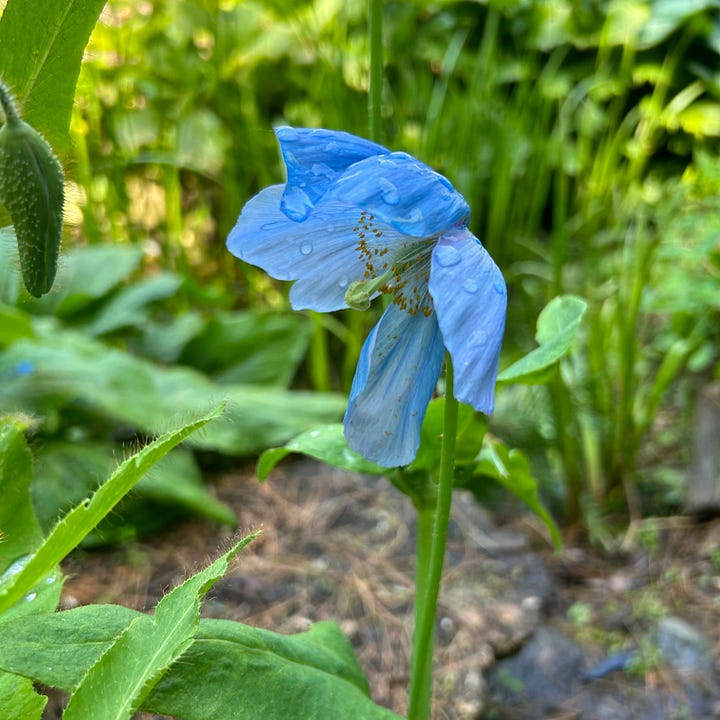
More recently I have had the pleasure to see it in bloom in gardens in Ireland. Last year I visited Sakonnet Gardens in Little Compton, Rhode Island, which consists of a series of interconnected garden rooms, one of which is called the Meconopsis Ditch where the blue poppies are tucked in. The owners wax poetically about the plant. John Gwynn’s: “Meconopsis hate it hot. They hate it too wet. They hate it dry. They melt in sun, but need bright light to flower. They can be monocarpic, croaking after flowering unless the first buds are removed. They are too brittle to mail. Thus they are the perfect temptation.” And Mikel Folcarelli: “Meconopsis has a blue as strong and clear as if the sky has fallen. The flower never fails to produce an audible gasp, and with light shining through the crinkled petals produces moisture in the eyes (and other areas) of the viewer.”
“So well does it grow that to walk along a path between gently sloping banks entirely veiled with the exquisite poppies is like going through some ethereal valley in a land of dreams.”—Elsie Redford

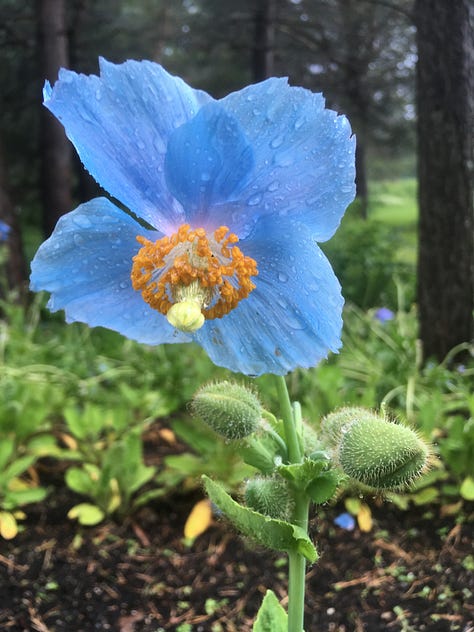
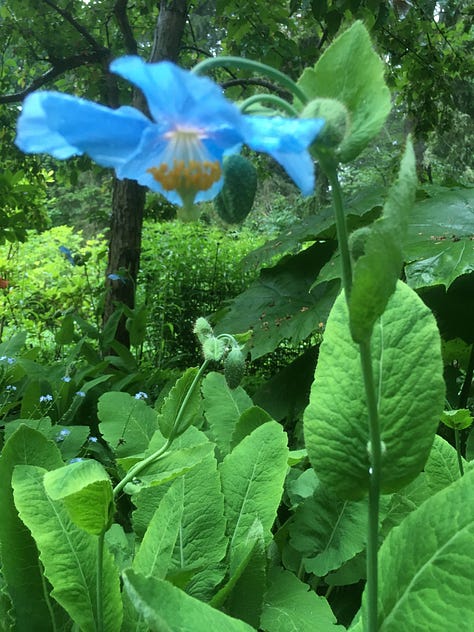
I’m not going to get to the Himalayan Mountains to see the blue poppies in their natural habitat. I hope to go to Scotland some time in May where there are massive plantings of M. “Slieve Donard’. Closer to home, I have been, and hope to return to, Les Jardins de Métis, or Redford Gardens, along the St. Lawrence River in Canada. First created in 1926 by Elsie Redford, and now cared for by her grandson Alexander, the gardens are breathtakingly beautiful. In early July banks of blue poppies are combined with white Martagon lilies in a woodland setting. There is much more to see in the garden but the poppies are enough to draw me back.
Down in my lower garden, under the snow cover, are four plants, four Meconopsis betonicifolia. After germinating seeds that promptly died, I invested in eight plants three years ago. All eight survived the first winter but half soon faded away. Since then I have been waiting for blooms, and last spring one plant was robust and promising, but nada
.
I am in good company. Eleanor Perenyi: “Total disaster…I reserve that category for first, M.betonicifolia, the fabled Himalayan poppy…somebody, somewhere, is cultivating this elusive blue Papaver, it is clear I never will.” Jamaica Kincaid: “I have never been able to grow M.betonicifolia with success.” Dan Pearson: “Try as I might, I have never succeeded in growing the blue Tibetan poppy in my garden.” But I have not given up yet. I might move my existing plants to an area that drains better because they do not like it too wet. And I will buy some seedlings of M.sheldonii ‘Lingholm’ from Walker’s Farm in Vermont this spring. I hope that some day I will gasp at a piece of fallen sky blooming in my garden.
.





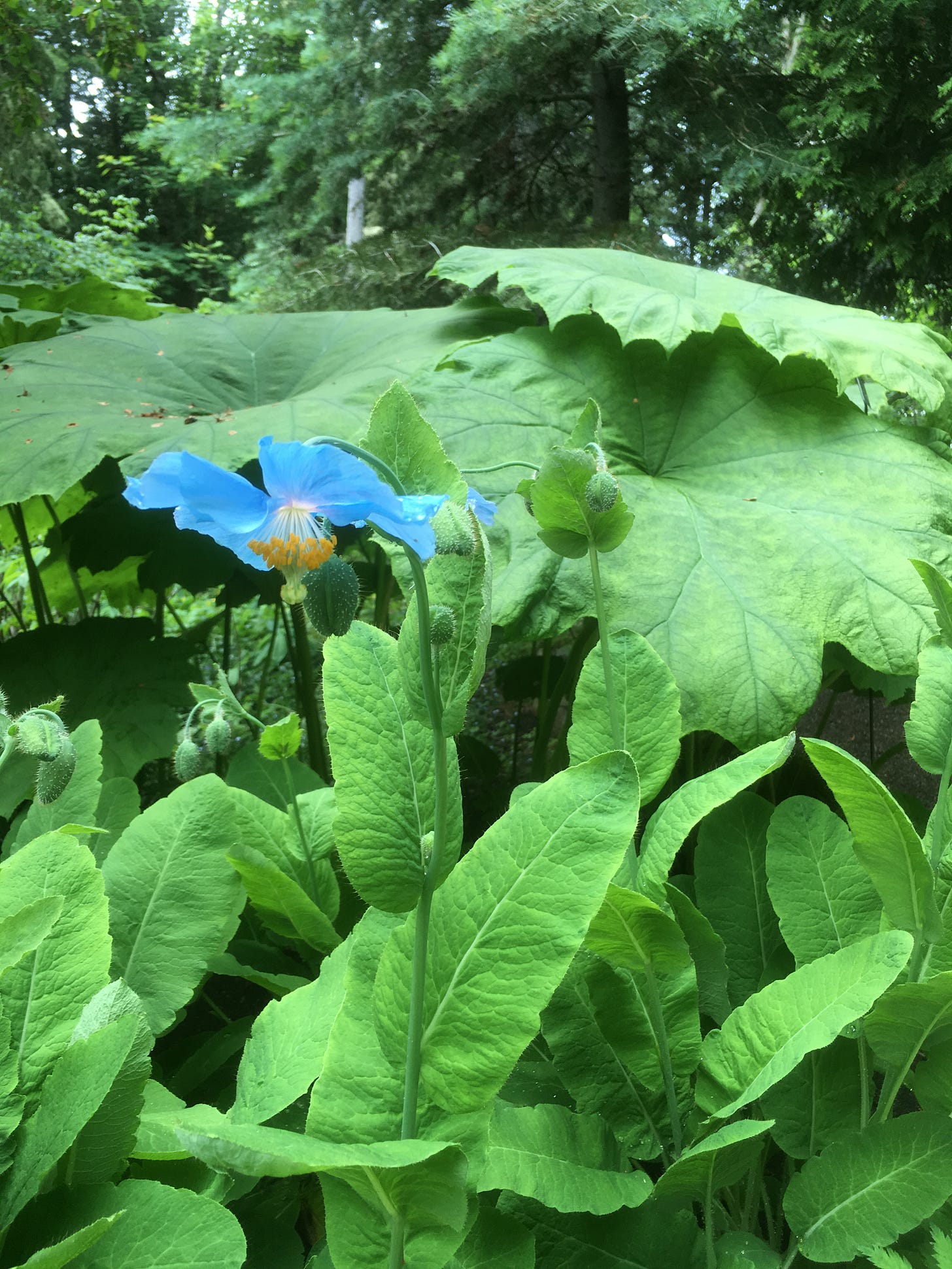
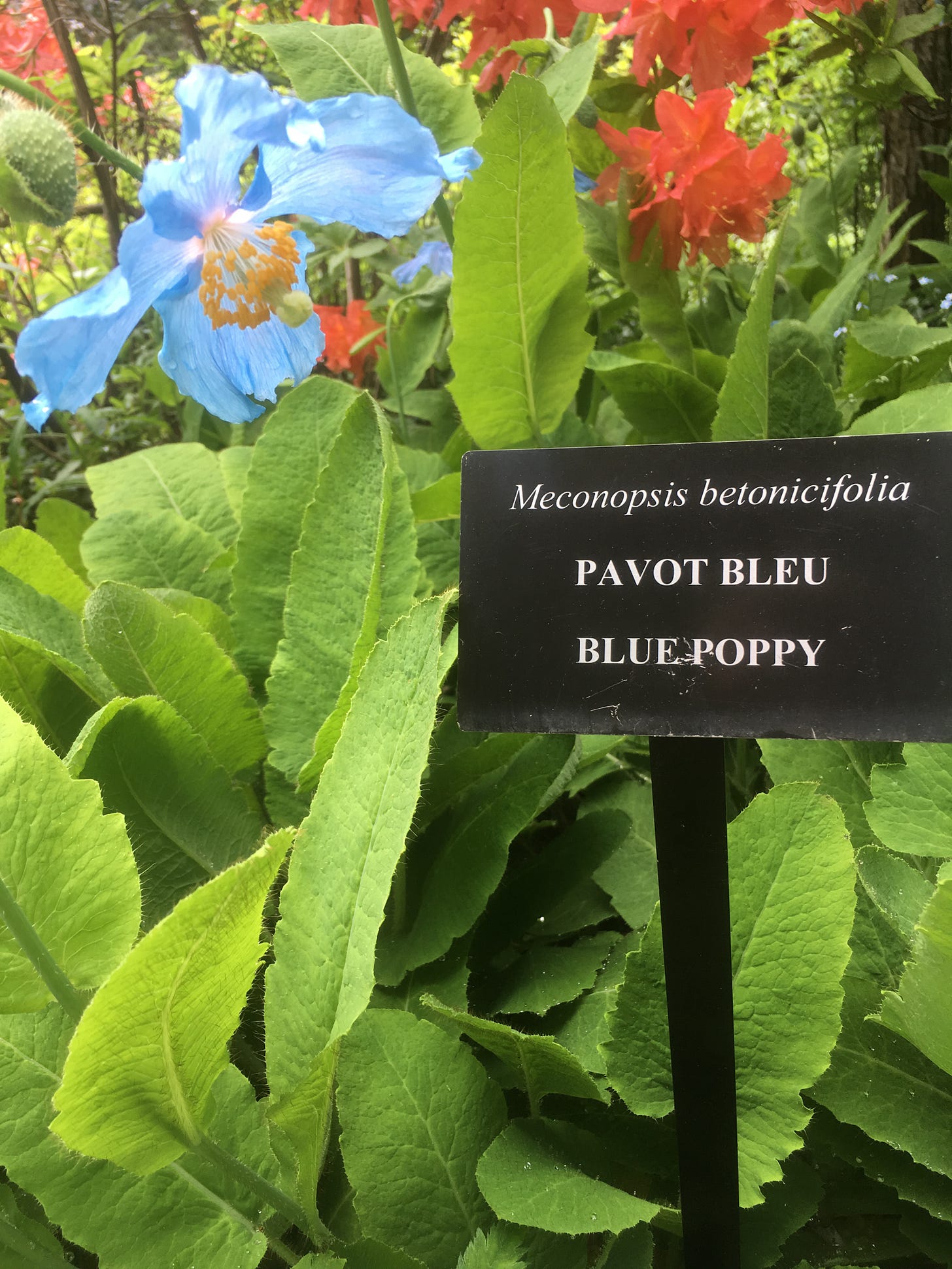
Wonderful piece,Jeffrey. What if we tried them in the old iris garden on our well-drained hillside?
would love to see